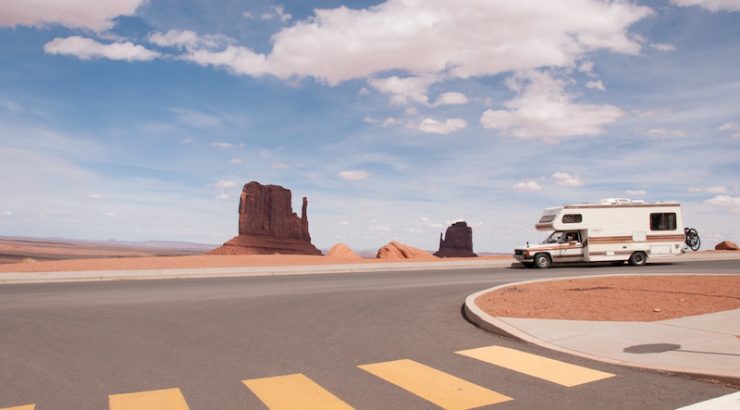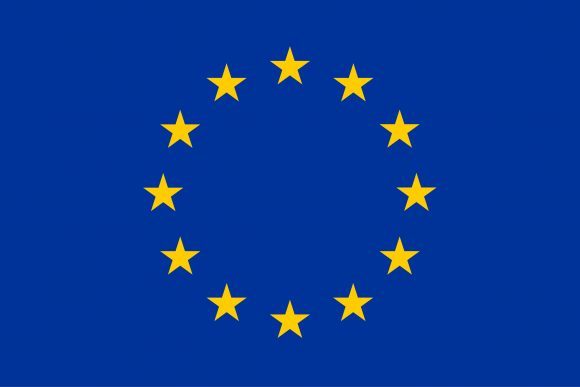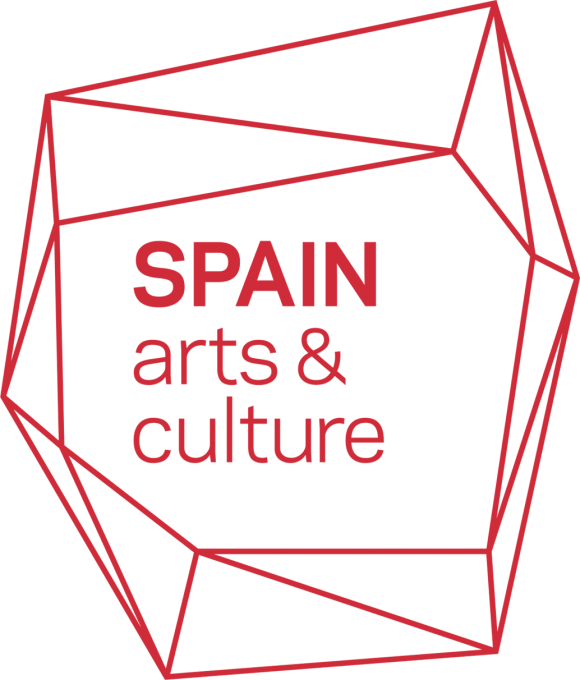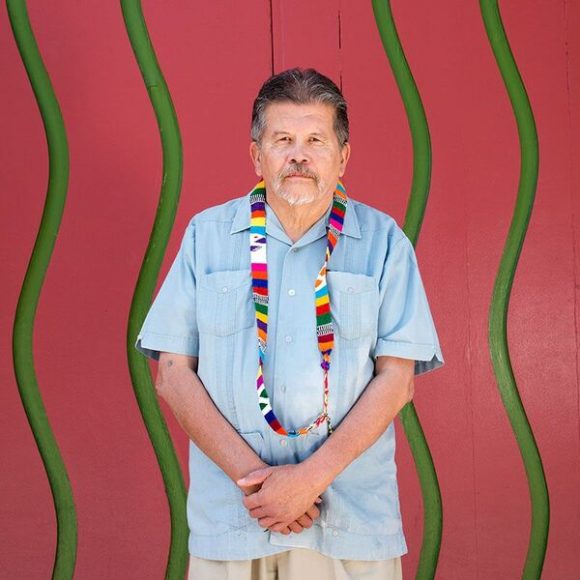
Capturing the Journey An Interview with Wilkinson Scholars-in-Residence
February 23, 2017
The Wilkinson College of Arts, Humanities, and Social Sciences, in collaboration with a “Getting to Know Europe” grant from the European Union, launched a Scholar-in-Residence program that gives European-based visual artists and culture professionals an opportunity to bring their work into the Chapman community and engage with new perspectives and ideas.
Our current scholar-team in residence is the duo of Janire Nájera and Matt Wright. Nájera is a Spanish artist who combines her experience with photography and journalism to share the stories and histories of people around the world; Wright is an UK artist who specializes in 360 degree photography. Both currently live and work together in the UK.
Chapman Student Art Ambassadors had the opportunity to ask Nájera and Wright a few questions about their work and their time here at Chapman University.
What are some of the main concepts of the projects you’ve been working on while at Chapman?
MW:
We are both really interested in creating projects that offer something to audiences that they haven’t seen before. I’ve been very fortunate that even though I’ve been working on photospheres for over ten years, they are still a very unique physical object. I’m mostly engaged in seeing how audiences respond to something that they’ve never seen before. And that’s what this residency has enabled me to do: get the photosphere medium in front of a lot more people. It’s reaffirmed what I’ve discovered, which is that people simply don’t have the visual language to fully understand what it is that they’re looking at. I really enjoy watching people misread it… From certain distances, the visual knowledge that they have makes them misread the sphere as a reflective surface. It’s not until they get 10 meters away that they realize that they’re not reflected in it, at which point they are drawn into it as if it has its own orbit.
JN:
I am interested in identity, social issues, intangible heritage, and giving people a voice before it’s lost, before we cannot learn their stories anymore because time has passed.
Janire, how has your background in journalism informed your work?
JN:
I studied journalism, but when I moved to the UK I realized that I couldn’t write my stories because I felt limited by English not being my native language. To tell my stories, I started using other disciplines and mixing photography with sound and video. It was, and still is, more important to me to be able to capture the color of stories, and to make them accessible to more people than to strictly follow the technique of one discipline. That’s not so relevant. Like journalists, I am still really interested in current themes, but the difference is that I don’t try to be objective and I work on longer term projects. I work on projects for a longer time so that I can really get to know the people. I also enjoy getting to exhibit my work, whether in a gallery or a book, because it’s an opportunity to display stories in different ways and reach people who might be interested in different disciplines or might find them more accessible. I am interested in social issues and people and telling their stories. I try to not make my projects about me or my perspective, but more about giving a voice to the people.
Matt, what made you want to start creating photospheres?
MW:
I created photospheres out of frustration. I started becoming interested in panoramic photography before there was any stitching software on the market, so I was using early versions of Photoshop to shoot a couple of images and pattern them together. That became three pictures, and four pictures, and then it got to the point where I was capturing all 360 degrees left to right, and then you sort of run out of space. You realize that you’ve almost transcended photography. It’s no longer me as a photographer selecting what I want to show someone, it’s me harnessing a documentation of the space. And then it was frustration of display. Having to always flatten this spherical content into a distorted form seemed unfair to the actual medium. After a year or two of experimenting with a colleague of mine, we realized that trying to find print technology that produces a high quality photographic print on a spherical surface doesn’t really exist. I think they’re still trying to figure it out today. It was at that point that we realized that we needed to print flat and then form the print into a sphere. We ended up going down the fabric route and its served me really well because it means that my work is transportable. I can fold it up into a tiny space and I can set it up at the top of a canyon or mountain or wherever without having to think about having to get a 3 meter orb out of the studio doors. I want to start looking into making my work more permanent because as much as I enjoy the art in situ, I’d very much like to get to the point where someone could commission me for a site specific work that stays. I just want to create as many more photospheres as I can and put them in as many crazy locations as I can get access to. I just really enjoy people’s reactions and watching people freeze for a moment in their everyday life and try to work something out.
How does the element of chance change your projects?
JN
: Some artists have really fixed ideas and they just want to achieve them, but that’s not how it is for me. I believe that as an artist that you need to keep an open mind. If you know everything when you start a project and you already know how it’s going to end, then there is no room for discovery or for journey, and so, for me, there is no point. I do what I do so that I can try to understand where I live and cope with living there better. For some of my projects I have a question and I don’t know how I am going to get the answer, so in those cases surprise, chance, and serendipity do their job and that’s how I do my project. Other times I don’t even think that I’m going to do a project and then by being at the right place at the right time, I get inspired. It’s all about keeping an open mind and being sensitive to what happens around you because that is what is going to inspire you and that’s where you are going to learn. You listen and you react to whatever you see.
How does being an insider or an outsider within the community affect your projects?
JN
: Being an insider or outsider really does affect each project. Sometimes being an outsider has its advantages. For example, when I’m in the UK and I’m from Spain, people find me more interesting and so they are more open with me. The video production and post production field that I work in is male-dominated and sometimes being a woman makes me feel like an outsider and it’s harder to get in. I just persevere and then when someone understands that I am equal, they let me in. Other times they see me and they don’t want to see me as their equal, so I don’t waste my time there. In some projects, I think that when you are an outsider the people you talk to have more doubts about what you are going to do with their story, so they might not be as open to you because they don’t trust you. You have to earn that trust. And that’s why I like working for longer periods of time so that I can become an insider with them.
How have you enjoyed your time at Chapman University?
MW:
We are very grateful to be undertaking the residency as part of the
EU and US: Getting to Know Europe
. It has been really rewarding for both of us to get the opportunity to actually see what life in Southern California is like because although we’ve passed through here on Janire’s project,
Moving Forward, Looking Back,
we’ve never really had much of a chance to really soak in the atmosphere. We’ve certainly never had the support that a space like Chapman University offers in terms of having work space and having access to all the different departments, as well as the students.
JN:
For me, it has been an honor to exhibit in California because it is like the last step of the journey. I exhibited
Moving Forward, Looking Back
in New Mexico, but I always wanted to show my work in California so that I could share it with the people who participated in the project. The opportunity to show the work here for me was like adding the last check on my to-do list. It has been really rewarding.
Moving Forward, Looking Back: Journeys Across the Old Spanish Trail
is an artistic project that combines photography, video, and sound to document Nájera’s exploration of the Spanish legacy along the Old Spanish Trail.Moving Forward, Looking Back is currently on view in the Henley Galleria on the 2nd Floor of Argyros Forum. The exhibition will be on view from February 01 – June 27, 2017. Hours: Monday – Friday, 7am – 8pm and Saturday – Sunday, 8am – 8pm.
Link to Virtual Exhibition: http://www.movingforwardlookingback.us/Chapman/MFLB.html
Funding for this exhibition and the artist residency was generously provided by the European Union (EU)—in 
partnership with EU, Chapman University’s Wilkinson College of Art, Humanities, and Social Sciences is engaged in the program, EU and US: Getting to Know Europe, and collaborating under the project, Creative and Cultural Industries: Unlocking the EU-US Potential.
Moving Forward, Looking Back is a project of SPAIN arts&culture, the cultural program of the Embassy of Spain. In
August 2013 there was an open call among the members of SPAIN RED, a platform for the promotion of  Spanish artists and creators in the United States.
Spanish artists and creators in the United States.
The premise of the contest was to present a significant panorama of the culture of the “Spanish-American”, the living testimony of more than 300 years of Spanish presence in this territory. This project sought to reflect this experience with a contemporary and attractive language through a creative, original, and accessible vision. There were more than 30 proposals, and the proposal presented by Janire Nájera was chosen.
Funding is also generously provided by the Escalette Endowment, the Chapman University Art Collections, and Wales Arts International.
All text and images under copyright. Please contact collections@chapman.edu for permission to use. Information subject to change upon further research.







